lordroel
Administrator
Member is Online
Posts: 68,099 
Likes: 49,493
|
Post by lordroel on Apr 11, 2021 6:10:21 GMT
Day 945 of World War II, April 11th 1942Eastern Front Russian landing begin at Eupatoriya, Crimea. Photo: Soviet scouts enter Yukhnov Continuation War Continuation WarThe Russians attack the Finnish positions in Aunus (Olonets) north of Lake Ladoga. The offensive is aimed at the dividing line between the Finnish 11th and 17th divisions (which is also the border of the V and VI Corps), and hits a stretch of thinly manned wilderness. After some initial difficulties, the Finnish troops are able to encircle the attacking Russian spearheads, and the last Russian pockets surrender on the 20th April. After the battle, Finns count some 10,000 Russian dead on the battlefield, the Finnish losses are 440 men. Battle of the Atlantic Italian submarine Calvi sinks Norwegian vessel Balkis off the coast of Brazil. 60 miles Southeast of Myrtle Beach, South Carolina, British anti-submarine trawler HMT St. Cathan sinks after a collision with Dutch freighter Hebe. 5 miles off Jacksonville, Florida, U-123 torpedoes US tanker SS Gulfamerica, on her maiden voyage, carrying 101,500 barrels of furnace oil which explodes (19 killed, 29 survivors rescued by Coast Guard vessels). The burning wreck of SS Gulfamerica sinks 5 days later. 7 miles South of Cape Fear, North Carolina, U-203 torpedoes US tanker SS Harry F. Sinclair, Jr. carrying 66,000 barrels of gasoline which burst into flame (all 36 crew abandon ship in 3 lifeboats and a raft but 10 die when their lifeboat is engulfed in burning gasoline, 26 survivors picked up by British anti-submarine trawler HMS Hertfordshire). The burned out wreck will be towed to Baltimore, repaired and returned to service in 1943 as SS Annibal. Photo: Harry F. Sinclair, Jr. in flames after being torpedoed/arc-anglerfish-arc2-prod-mco.s3.amazonaws.com/public/RRHJRSD6BVEFVM6LPI33IMWS6Q.jpg) 45 miles East of Cape Fear, U-160 sinks British passenger steamer SS Ulysses (all 190 crew, 5 gunners and 95 passengers picked up by US destroyer USS Manley). 580 miles Northeast of St. Thomas, Virgin Islands, U-130 sinks Norwegian MV Grenanger (all 36 crew abandon ship in a motor launch & a lifeboat and arrive at St. Thomas 8 days later). Battle of the Mediterranean Northwest of Corfu, HMS Torbay surfaces and attacks 2 tiny Italian schooners with gunfire, sinking schooners Gesu Crocifisso with 50 rounds from the deck gun while schooner Natalina runs aground and is wrecked. British destroyer HMS Kingston, at dry dock in La Valletta harbour, Malta, is hit by bombers and destroyed. Pacific War BATAAN DEATH MARCH Japanese massacre 350 Filipino POWs (91st Division) as they march North around Mount Samat towards the transfer station at Balanga. All afternoon, men are beheaded or bayoneted (Pantingan River Massacre). As POWs pour into Balanga, promised food, water and medical treatment fail to materialize. Dysentery and other diseases start to spread due to overcrowding. NEW GUINEA US Douglas A-20 Havocs attack Japanese shipping in the Gulf of Huon off the town of Lae, badly damaging the cargo vessel Taijun Maru (later scuttled). JAPAN US submarine USS Trout damages Japanese tanker Nisshin Maru 5 miles off the South coast of Japan. BURMA British tanks and infantry have withdrawn up the Irrawaddy River valley and formed a defensive line from Minhia on the Irrawaddy River, East to Taungdwingyi and Pyinmana (to protect the oilfields at Yenangyaung 35 miles further North). Overnight, “on a pitch-dark night lit by violent thunderstorms”, Japanese begin the assault on this line with an attack 48th Indian Brigade at Kokkogwa.
|
|
lordroel
Administrator
Member is Online
Posts: 68,099 
Likes: 49,493
|
Post by lordroel on Apr 12, 2021 2:45:16 GMT
Day 946 of World War II, April 12th 1942
Battle of the Atlantic
20 miles off Wilmington, North Carolina, U-203 damages Panamanian tanker SS Stanvac Melbourne (3 killed, 45 survivors), which is towed to Wilmington for repairs and returns to service on July 2.
60 miles South of Haiti, U-154 sinks US freighter SS Delvalle (2 dead, 61 survivors) after a running battle lasting 9 hours during which SS Delvalle unsuccessfully tries to ram U-154.
300 miles Northeast of Anguilla, U-130 sinks US tanker SS Esso Boston carrying 105,400 barrels of crude oil (all 37 hands escape in 3 lifeboats).
Italian submarine Calvi sinks Panamanian tanker MV Ben Brush off the coast of Brazil (1 killed, 34 survivors).
Air War over Europe
Another RAF raid on Essen during the night. 251 aircraft took part in the raid - 171 Wellingtons, 31 Hampdens, 27 Stirlings, 13 Halifaxes and 9 Manchesters. Five HP and 200 IBs hit the Krupps factory and a large fire was started. 28 private dwellings were destroyed and 50 seriously damaged. 27 people were killed, 36 injured and 9 missing. Ten aircraft - 7 Wellingtons, 2 Hampdens and one Halifax - were lost with 5 of this number shot down by nightfighters. Confirmed kills were awarded to Lt. Herman Mueller and Oblt. Horst Patuschka of Erg./NJG 2, Oblt. Helmut Lent of II./NJG 2, Oblt. Hans-Dieter Frank of 2./NJG 1 and Oblt. Helmut Woltersdorf of 7./NJG 1. This raid concluded a disappointing series of RAF raids on Essen, which was judged to be the heart of the German armaments industry. Essen's records show that industrial damage was caused on only two ocassions - a fire in the Krupps factory and a few bombs on some nearby rail lines -, that sixty-three civilians were killed and that a modest amount of residential property had been hit. There had been eight heavy raids since the first Gee raid on 8/9 March.
Pacific War
SOUTHWEST PACIFIC AREA
Royce Mission Australia-based B-25's, staging through Mindanao, hit the harbor and shipping at Cebu while B-17's carry out single-bomber strikes from Mindanao against Cebu Harbor and Nichols Field.
18th Reconnaissance Squadron, 22d BG (Medium), transfers from Townsville to Reid River with B-26's; first mission is 21 Apr; 18th is redesignated 408th Bombardment Squadron on 22 Apr.
BURMA
American Volunteer Group P-40s attack Toungoo Airfield and destroy 3 Japanese bombers..
PHILIPPINES
Motor torpedo boat PT-35, undergoing repairs on the marine railway at the Cebu Shipyard and Engineering Works, is destroyed by crew as the Japanese capture Cebu Island.
|
|
lordroel
Administrator
Member is Online
Posts: 68,099 
Likes: 49,493
|
Post by lordroel on Apr 13, 2021 2:46:13 GMT
Day 947 of World War II, April 13th 1942Battle of the Atlantic 150 miles North of Norway, U-435 & U-436 attack convoy QP-10 from Murmansk, USSR, to Reykjavik, Iceland. U-436 sinks Soviet SS Kiev (6 crew killed including at least 1 woman). The remaining crew and 8 passengers (family of staff at the Soviet embassy in London) are picked up after 30 minutes by British anti-submarine trawler HMS Blackfly. U-435 torpedoes Panamanian SS El Occidente which sinks before the lifeboats can be launched, so the crew jumps overboard into the freezing water (20 die but 21 survivors are picked up 30 minutes later by British minesweeper HMS Speedwell). U-435 also sinks British SS Harpalion, which had been bombed and damaged by German Ju88 bombers earlier in the day (all 70 crew had already abandoned ship). 25 miles off Cape Canaveral, Florida, U-123 uses her last torpedoes to sink American SS Leslie (4 killed, 28 survivors) and then sinks Swedish MV Korsholm with shellfire from the deck gun (9 dead, 17 survivors). At 5.52 AM 40 miles south of Haiti, U-154 sinks British SS Empire Amethyst (all 47 hands lost). 400 miles South of Newfoundland, U-402 stops British SS Empire Progress with a dud torpedo but then sinks her after midnight with 2 coup de grâce (12 dead, 38 survivors picked up by Norwegian MV Olaf Fostenes). At midnight within sight of Cape Hatteras, North Carolina, U-85 is detected on the surface by radar on US destroyer USS Roper, which closes in and attacks with deck gun and machinegun fire. U-85 fires a torpedo and dives, leaving 29 men in the water. USS Roper sinks U-85 (all hands lost) with 11 depth charges, killing everyone in the water (some are in civilian clothes and carrying US currency and identification cards, suggesting that U-85 is in the process of landing spies). Operation Calendar - Aircraft Carrier USS Wasp receives 47 Supermarine Spitfire Mk. V fighters of No. 603 Squadron RAF at Glasgow, these Spitfire are destined for Malta. Photo: a Spitfire Mk. Vc (Tropical) from No. 603 Squadron RAF is being hauled aboard USS Wasp by crane, 13th April 1942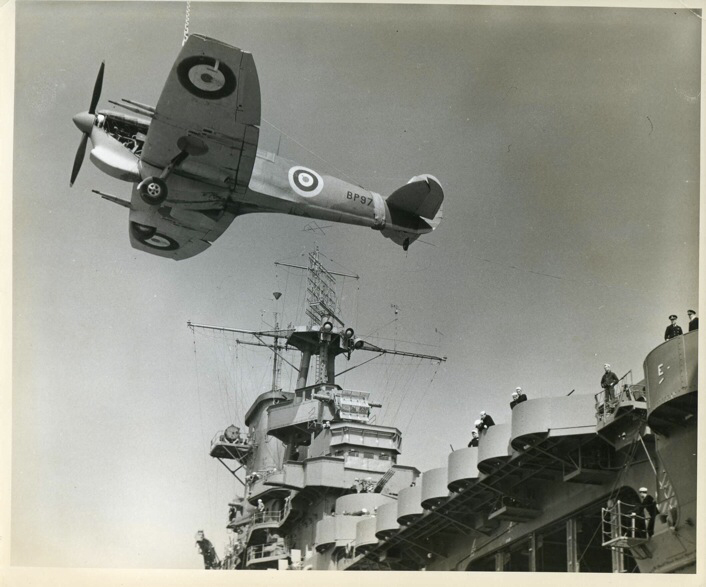 Battle of the Mediterranean Battle of the Mediterranean82 miles Southwest of Benghazi in the Gulf of Sirte, British submarine HMS Thrasher sinks German freighter Atlas in a convoy. Thrasher is counterattacked by convoy escorts with 19 depth charges but is undamaged. United StatesPhoto: an African-American Staff Sergeant seated on a motorcycle, armed with a sidearm, in front of a building with a sign that reads "Military Police – Colored", Columbus, Georgia." April 13, 1942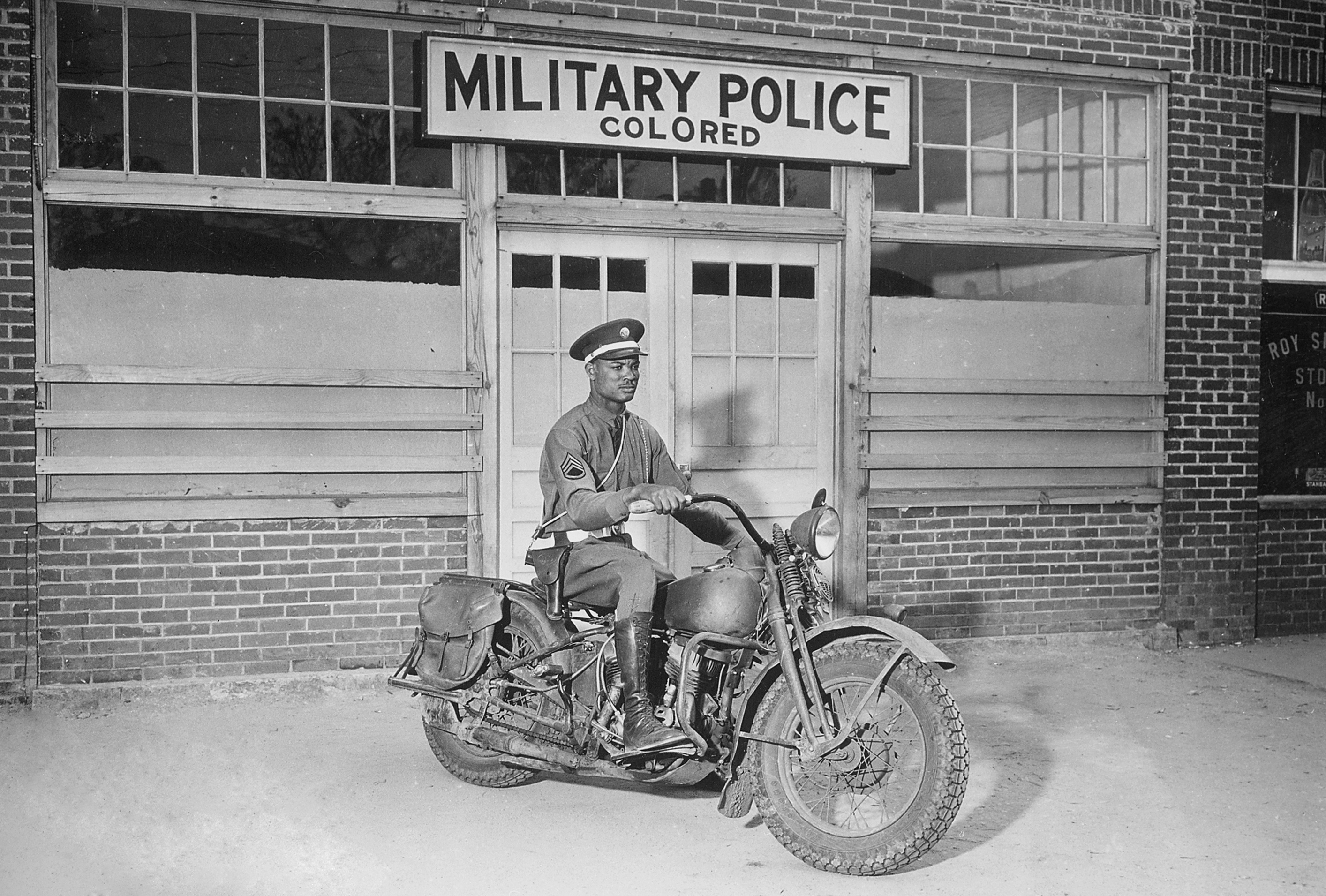 Pacific War Pacific War UNITED KINGDOM Rear Admiral Lord Mountbatten is appointed Chief of Combined Operations and functions as a member of the British Chiefs of Staff Committee. This appointment announced today was effective March 18. SOUTHWEST PACIFIC AREA (5th Air Force): Royce Mission Australia-based B-25's hit targets in the Philippines for the second consecutive day. Staging through Del Monte Airfield, the B-25's take off just after midnight during 12/13 Apr and bomb shipping at Cebu and installations at Davao. Later in the day the B-25's again attack Davao, bombing the dock area. Lost is B-17E 41-2447. NEW GUINEA 5th AF - Seven A-24s of the 3rd BG escorted by 8 P-40Es of 75 Squadron attack Lae. Lost is P-40E Kittyhawk A29-15 PACIFIC Submarine USS Grayling torpedoes and sinks a Japanese merchant cargo ship off the southwest tip of Shikoku, Japan. SOUTH PACIFIC Vice Admiral Robert L Ghormley, USN, is assigned as Commander-in-Chief South Pacific (COMSOPAC). He is to command all Allied base and local defense forces (land, sea, and air) in the South Pacific Islands, with the exception of New Zealand land defenses.
|
|
lordroel
Administrator
Member is Online
Posts: 68,099 
Likes: 49,493
|
Post by lordroel on Apr 14, 2021 2:48:37 GMT
Day 948 of World War II, April 14th 1942Air War over Europe Following a successful RAF attack on Lubeck on the night of 28 March, German public opinion demanded heavy reprisal attacks against British cities. Although few aircraft could be spared from the Russian Front, a small formation was assembled for which the He-111s of Erg. U. Lehr Kdo 100 were to act as pathfinders. The main bomber force, comprising some 80 aircraft were drawn from II and III./KG 2 and II./KG 40 equipped with Do-217s as well as KuFlGr 106, an anti-shipping unit equipped with Ju-88s while I./KG 2 with around 25 Do-217s joined the battle a little later. The attacks were planned to start during the moonlight period at the end of April, and copying the tactics so successfully employed by the RAF against German towns, were to be concentrated and of a short duration in order to minimize British defensive action. The Luftwaffe Operations Staff issued the following order: “The Fuehrer has ordered that air warfare against England is to be given a more aggressive stamp. Accordingly when targets are being selected, preference is to be given to those where attacks are likely to have the greatest possible effect on civilian life. Besides raids on ports and industry, terror attacks of a retaliatory nature are to be carried out against towns other than London. Minelaying is to be scaled down in favor of these attacks.”The new bombing operation was called the “Baedecker Raids”, named after a German Publishing company that printed tourist guidebooks. Hitler announced that the Luftwaffe would destroy every building in Britain to which the guidebooks had awarded three stars of its places of interest. RAF Bomber Command sends 12 Douglas DB-7 “Boston” bombers on a successful and accurate daylight raid across the English Channel on the Mondeville power station near Caen, France. Overnight, 208 RAF bombers (142 Wellingtons, 34 Hampdens, 20 Stirlings, 8 Halifaxes, 4 Manchesters) mount an inaccurate raid on Dortmund, Germany (6 buildings hit, 4 civilians killed, 27 injured). 5 Wellingtons and 4 Hampdens are lost. Battle of the Atlantic USS 'Roper' sinks 'U-85', scoring the first submarine sunk by an American ship. Amplifying the above: 'U-85' was the first U-boat to be sunk off the North American coast after the start of the Operation Paukenschlag (Drumbeat) on January 13, 1942. On the day that she was sunk, 'U-85' stayed on the surface through the engagement. After repeated hits on the boat, fatally damaging her, the order to abandon ship was given and maybe half of the crew got into the water and then 'U-85' started to sink again fast. USS 'Roper' then dropped 11 depth charges onto the already sinking U-boat and its 2 dozen survivors and in the process killed everyone in the water. Photo: The U.S. Navy destroyer USS Roper (DD-147) escorting a convoy, out of Hampton Roads, Virginia (USA), in 1942. Ships of the convoy are visible on the horizon. Roper is wearing Camouflage Measure 12 (Modified)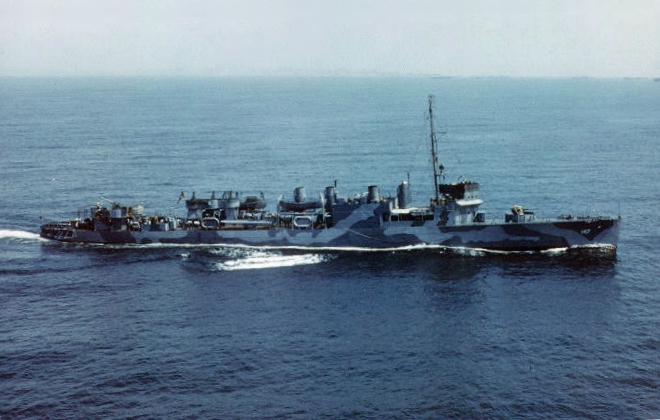 German submarine 'U-203' torpedoes and sinks the British freighter SS 'Empire Thrush' approximately 8 miles north of Diamond Shoals, North Carolina. The antisubmarine vessel ("Q-ship") USS 'Asterion' (AK-100), masquerading as the freighter SS Evelyn (her original mercantile name), picks up entire crew (and the captain's dog). The rescued sailors are enjoined not to reveal the fact that they were rescued by a "Q-ship" and to keep secret Asterion's true identity. 650 miles west of Brest, France, British sloop HMS Stork and corvette HMS Vetch sink U-252 with depth charges (all hands 44 lost). 10 miles off Cape Hatteras, North Carolina, U-203 sinks British SS Empire Thrush (all 48 crew members and 7 gunners picked up by US Q-ship USS Asterion). Off Barbados, U-66 sinks Greek SS Korthion (14 dead and 9 survivors). Off Cape Cod, U-571 sinks American SS Margaret (all 29 hands lost). Photo: "Sunset picture taken on 14 April 1942 at Freetown Harbour showing a convoy at anchor. On the left is HMS Devonshire and on the extreme right is AMC Alcantara." This photo was taken from HMS Adamant Battle of the Mediterranean Battle of the MediterraneanOne of Britain’s most successful submarines HMS Upholder (having sunk 1 destroyer, 3 submarines and 12 merchant supply ships; total 89,848 tons) disappears in the Mediterranean between Italy and Libya (all 32 crew and 1 passenger lost). HMS Upholder is sunk either by bombs from 2 Messerschmitt Bf110 and 2 Dornier Do17 bombers, escorting Italian “Aprilia” convoy to from Italy to Tripoli, or by depth charges from torpedo boat Pegaso. Pacific WarAUSTRALIA The government approves the 30 March directive in which General Douglas MacArthur is named Supreme Commander, Southwest Pacific Area (SWPA). BATAAN Japanese shell US positions on Corregidor Island. Bataan Death March continues. As more US/Filipino POWs are moved from Balanga to Orani, the first wave is marched another 15 miles North from Orani to Lubao. The men are again fed a bowl of rice, then crammed into an abandoned warehouse where there is water from a single faucet. The heat is intense and the men are starving, dehydrated and diseased, but stragglers are beaten and bayoneted all along the route. NEW CALEDONIA Photo: The U.S. Navy seaplane tender USS Tangier (AV-8) anchored at Nouméa, New Caledonia, on 14 April 1942. She has a Consolidated PBY-5 Catalina and a Vought OS2U-2 Kingfisher on the seaplane deck, aft
|
|
lordroel
Administrator
Member is Online
Posts: 68,099 
Likes: 49,493
|
Post by lordroel on Apr 15, 2021 2:49:14 GMT
Day 949 of World War II, April 15th 1942Air War over Europe Overnight, 152 RAF bombers (111 Wellingtons, 19 Hampdens, 15 Stirlings & 7 Manchesters) inaccurately attack Dortmund, Germany (1 house destroyed, 1 civilian killed, 6 injured). 3 Wellingtons and 1 Stirling are lost. Photo: German soldiers on quad-mounted 2-cm-Flak, Berlin Zoo-Flak Tower, 16 April 1942 Battle of the Atlantic Battle of the Atlantic German submarine' U-575' torpedoes and sinks the unarmed U.S. freighter SS 'Robin Hood', en route to Boston, Massachusetts from Trinidad, British West Indies, about 300 miles off Nantucket Island, Massachusetts. United KingdomLord Louis Mountbatten's dazzling progress through the military hierarchy continues apace. Less than six months after being appointed chief of the tri-service Combined Operations, he has been made a vice- admiral of the Royal Navy, a lieutenant-general in the army, an air- marshal of the RAF and a full member of the Chiefs of Staff Committee. At yesterday's meeting in London of the Anglo-American Combined Commanders' Group. it was decided that no major Allied assault on the Nazis in western Europe could be launched this year. The decision puts the onus on Mountbatten at Combined Operations to keep the Germans guessing by delivering a succession of hit-and-run raids. One report, unconfirmed, says that he is planning an assault in strength on one of the French Channel ports. Such an operation, it is said, would provide invaluable experience for a full-scale invasion. There are to be no more frills and fripperies in Britain as from 1 June. A new order issued by the board of trade bans embroidery, applique work and lace on women's and girl's underwear and also introduces stringent rule designed to minimize the work and material put into clothing. Skirts are to have no more than three buttons, six seams, one pocket and two box pleats or four knife pleats. Double-breasted suits are out, and men will also lose pockets on pyjamas. King George VI writes to the governor of Malta awarding the island the GC "to honour her brave people" and "to bear witness to a heroism and devotion that will long be famous." Pacific WarPHILIPPINE ISLANDS The last remaining motor torpedo boat, PT-41, her torpedoes expended and lacking gasoline to operate, is transferred to the Army to be moved overland to Lake Lanao where she is slated for service as a machine gun boat. The rapid Japanese advance across Mindanao, however, compels the Army to destroy PT-41 to prevent her capture. BURMA Japanese troops break through the British defenses and cut the road from Minhia, on the Irrawaddy River, North to Yenangyaung in several places. Allies retreat using British 7th Armoured Division tanks to break the Japanese roadblocks. At 1 PM, British General Slim orders the demolition of oilfields and the refinery at Yenangyaung. 1 million gallons of crude oil are ignited and oilwells are plugged with cement (Japanese will access the oil by simply redrilling the wells). Photo: the electricity and generating plant at the Yenangyaung oilfields in flame and smoke as Japanese forces closed in. The plant produced power for 85 percent of the oil production in Burma. So successful was the demolition work that the Japanese will be unable to extract the oil for at least a year. The picture shows:- million-gallon oil tanks ablaze, setting up a smokescreen that hid Yenangyaung from the air and raised the temperature several degrees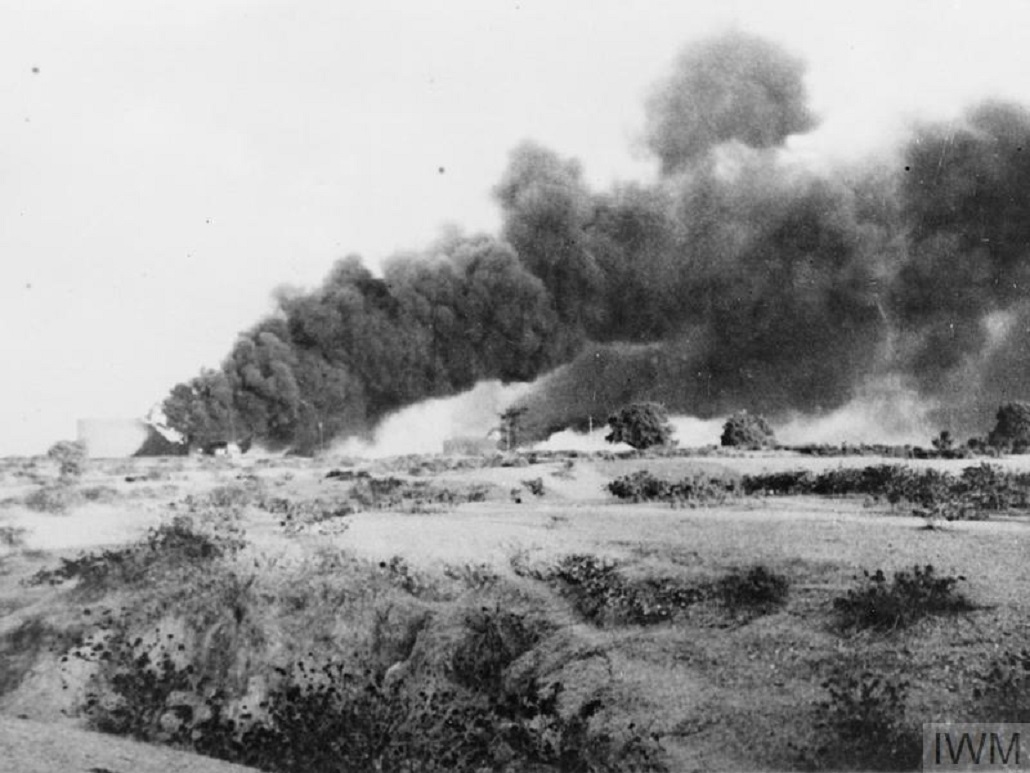 Photo: British troops destroy equipment and machinery at the Yenangyaung oilfields in Burma before retreating Photo: British troops destroy equipment and machinery at the Yenangyaung oilfields in Burma before retreating BATAAN Japanese shelling of James and Morrison artillery batteries on Northern Corregidor Island collapses a tunnel dug by Filipino troops into the hillside for shelter (70 killed). Bataan Death March continues. More US/Filipino POWs are moved from Balanga to Orani to Lubao. The first wave is again moved on, marching another 8 miles North from Lubao to San Fernando. Many die from heat, starvation, disease and random beatings and bayoneting by Japanese guards.
|
|
lordroel
Administrator
Member is Online
Posts: 68,099 
Likes: 49,493
|
Post by lordroel on Apr 16, 2021 1:52:17 GMT
Day 950 of World War II, April 16th 1942
Battle of the Atlantic
200 miles North of Norway in the Barents Sea, U-403 sinks British SS Empire Howard, the ship of the convoy commodore in convoy PQ-14 (25 killed, 37 survivors picked up by British armed trawler HMS Lord Middleton and HMS Northern Wave).
Battle of the Caribbean
60 miles West of Grenada, U-66 sinks Dutch tanker SS Amsterdam (2 dead and 38 survivors picked up by Yugoslavian SS Ivan next day). At 6 PM 150 miles off the coast of North Carolina, U-572 sinks Panamanian SS Desert Light carrying 3800 tons of supplies from New York to the Naval Operating Base, Bermuda, including 104 tons of ammunition and dynamite (1 killed, 30 survivors picked up by US destroyer USS Roper).
Battle of the Mediterranean
3 miles off the Italian coast near Brindisi, British submarine HMS Turbulent sinks Italian merchant Delia.
Operation Lighter - British destroyers HMS Kipling and HMS Kelvin land Royal Marines (11th Battalion) on the tiny Greek island of Koufonisi, 3 miles South of the Eastern end of Crete, to destroy a radio transmitter. 23 miles West of Beirut, Lebanon, U-81 sinks Free French anti-submarine trawler Vikings at 8.38 PM (41 dead, 16 survivors) and British SS Caspia at 9.48 PM (27 dead and 11 survivors rescued by British motor launches HMS ML-1023 & ML-1032). At 10.50 PM, U-81 surfaces and shells 3 Egyptian sailing boats, sinking Fatouh el Kher, Bab el Farag and an unidentified vessel.
Vichy France
Under German pressure, Marshal Petain appoints Pierre Laval head of government and himself becomes a ceremonial head of state. Admiral William D. Leahy, USN (Retired), Ambassador to France, receives a cable from Washington with information that his recall "for consultation" will be announced shortly after the formation of a new Vichy government.
Pacific War
BURMA
During the night of 16/17 April, 10th Air Force B-17's take off from Dum Dum Airfield near Calcutta, India to bomb Rangoon. 6 B-17's, guided by flares, bomb the target; numerous searchlights make it impossible to estimate the bombing results.
SOUTHWEST PACIFIC AREA
(5th Air Force): HQ 49th Pursuit Group transfers from Bankstown to Darwin.
PACIFIC
The submarine USS Tambor torpedoes and sinks a Japanese stores ship 50 miles southeast of Kavieng, New Ireland, Bismarck Archipelago.
PHILIPPINE ISLANDS
The Japanese Kawamura Detachment (41st Infantry) lands unopposed at Iloilo and Capiz on Panay Island.
JAPAN
Imperial Navy issues Order No.18 for Admiral Yamamoto’s Combined Fleet to draw up plans to capture Midway Island in the central Pacific and the Aleutian Islands near Alaska, USA.
|
|
lordroel
Administrator
Member is Online
Posts: 68,099 
Likes: 49,493
|
Post by lordroel on Apr 17, 2021 14:27:10 GMT
Day 951 of World War II, April 17th 1942Eastern Front - Battle of the CaucasusGerman bombers sink Soviet troopship Svanetiya carrying troops from Sevastopol to Novorossiyks in the Caucasus (750 killed. 193 crew and passengers rescued). Battle of the Atlantic 300 miles East of Cape Hatteras, North Carolina, U-123 (out of torpedoes and with only 29 rounds for the deck gun) closes on the surface to 400 meters and sinks US freighter SS Alcoa Guide with the deck gun plus 37mm and 20mm anti-aircraft guns (6 dead, 27 survivors in lifeboats picked up on April 19 by US destroyer USS Broome, 1 man on a raft picked up by British SS Hororata after 30 days). 100 miles West of Grenada in the Caribbean, U-66 sinks Panamanian tanker Heinrich von Riedemann carrying 127,041 barrels of crude oil (all 44 hands escape in 3 lifeboats). Air War over Europe RAF Bomber Command experiments with an ill-conceived daytime raid to achieve accurate bombing. 12 Avro Lancaster bombers (6 each, 44 & 97 Squadron) fly at low level without fighter support to attack the MAN diesel engine factory at Augsburg in Southern Germany (450 miles from the French coast). Diversionary RAF raids in Northern France fail to distract Luftwaffe fighters, which shoot down 4 Lancasters. Anti-aircraft fire downs 3 more Lancasters over Augsburg. 7 Lancasters release their bombs over the target, causing minimal damage. Squadron Leader Nettleton (44 Squadron) wins the Victoria Cross for leading the raid and nursing his badly damaged aircraft home. Pacific War SOUTHWEST PACIFIC AREA (5th Air Force): 8th Pursuit Squadron (Interceptor), 49th Pursuit Group (Interceptor), transfers from Canberra to Darwin, Australia with P-40's; first mission is 20 Apr. A6M2 Zero piloted Sakai is lost on a mission to Port Moresby. Photo: A U.S. Navy Grumman J2F-5 Duck on a coastal anti-submarine patrol. The aircraft is armed with Mark XVII depth bombs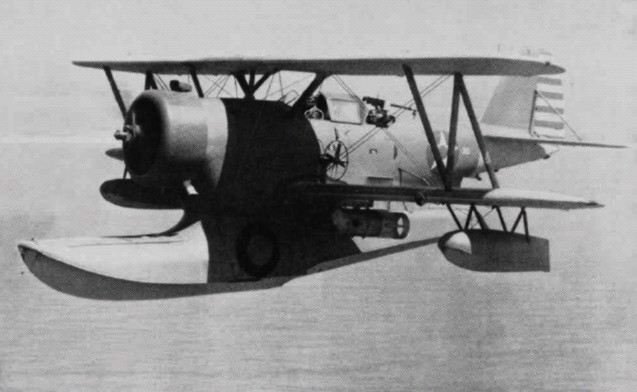 BURMA Burma. Chinese General Sun Li Jen leads 1121 men of 113th Regiment (38th Division) South to relieve 7000 British and Indian troops trapped by Japanese 33rd Division around Yenangyaung. British General Slim send British 7th Armoured Brigade North across the Pin Chaung River (before the Japanese ring closes) to meet up with the Chinese who lack tanks and artillery. Further East, Japanese 56th Infantry Division heads 45 miles North from Mawchi to Bawlake, whence they can threaten the Burma Road (the important supply route from India, through Burma into China) between Mandalay and Lashio. PANAY, PHILIPPINES Japanese troops and light tanks head North from Iloilo City and South from Capiz across the flat Iloilo Plain. They meet at Dumarao, 30 miles South of Capiz (now known as Roxas City), and control the Eastern half of the island. HAWAII Photo: The U.S. Navy destroyer tender USS Whitney (AD-4) moored behind torpedo nets at Pearl Harbor, 17 April 1942. Four of her eight 12.7 cm/51 guns have been removed and her anti-aircraft battery had been strengthened
|
|
lordroel
Administrator
Member is Online
Posts: 68,099 
Likes: 49,493
|
Post by lordroel on Apr 18, 2021 6:28:38 GMT
Day 952 of World War II, April 18th 1942YouTube (America Strikes Back - Tokyo in Flames)Battle of the AtlanticAt dawn in the middle of the South Atlantic 1360 miles East of Rio de Janeiro, Brazil, German armed merchant cruiser Michel shells and stops British tanker MV Patella carrying 10,000 tons of British Admiralty oil (3 killed, 60 survivors taken off). MV Patella is scuttled. Battle of the MediterraneanIn the Ionian Sea 60 miles East of Cape Colonna, Italy, British submarine HMS Torbay sinks German army cargo ship Bellona despite being escorted by an Italian destroyer. Overnight, US aircraft carrier USS Wasp carrying spitfires to Malta, escorted by US destroyers USS Lang and USS Madison, passes through the Strait of Gibraltar and are joined by British cruisers HMS Charybdis and HMS Cairo and 5 destroyers. Pacific War CHINA The Chinese 55th Division retreats from Manchi. It is met by the IJA 56th Division and destroyed. ALASKA (11th Air Force): 18th Pursuit Squadron (Interceptor), 28th Composite Goup, transfers from Elmendorf Field, Anchorage, Territory of Alaska to Ft Greely, Kodiak, Aleutian with P-40's. JAPANESE OCCUPIED NETHERLANDS EAST INDIES The US submarine USS Searaven, which arrived off Japanese-held Timor Island, Netherlands East Indies yesterday evening, rescues 32 Royal Australian Air Force airmen from the island. AUSTRALIA General Douglas MacArthur assumes command of the Southwest Pacific Area. The staff of the new command is: Australian General Thomas Blamey, Commander of Allied Land Forces; USAAF Lieutenant General George H Brett, Commander of Allied Air Forces; USN Vice Admiral Herbert F Leary, Commander of Allied Naval Forces; US Army Lieutenant General Jonathan M Wainwright, Commander of Forces in the Philippines; and US Army Major General Julian F Barnes, Commander of US Army Forces in Australia. The Allied Air Forces had command all USAAF tactical and associated service units in Australia, and operational control, except for training, of the Royal Australian Air Force and the Royal Netherlands East Indies Air Force. In reality General MacArthur kept Blamey from having control over United States land forces in the Pacific during World War II. BURMA Two American Volunteer Group P-40s down a Japanese reconnaissance aircraft over Loiwing at 1300 hours local. In eastern Burma, a Chinese division collapses and opens the way for a Japanese drive toward Lashio, the eastern terminus of the Burma Road. SOUTHWEST PACIFIC AREA (5th Air Force): 5th Air Force units come under control of the Allied Air Forces (SWPA) which is created in Australia to control AAF, Royal Australian Air Force (RAAF) and Dutch elements. HQ 19th Bombardment Group transfers from Melbourne to Garbutt Field. SOLOMONS RAAF - Hudsons attack Simpson Harbor. Sunk is Komaki Maru. DOOLITTLE RAID Lieutenant-Colonel James H. Doolittle launches his Doolittle Raid on Tokyo on 18 April 1942. While successful in many respects, it does not go exactly as planned. The day is rainy and overcast, with thirty-foot swells and repeated rain squalls. Photo: USS Nashville (CL-43) enroute to Japan for the first raid on the islands. Photographed from USS Salt Lake City (CA-25) At 03:00, the USS Enterprise radar operators spot two Japanese picket ships about 11 miles ahead. Admiral "Bull" Halsey sounds general quarters and takes evasive action, which avoids contact for the moment. At 05:58, an Enterprise scout plane spots another patrol boat about 40 miles ahead and flies back to drop this sighting on the Enterprise's deck in a canvas bag in order to maintain radio silence. Halsey again changes course, and again this avoids contact. Photo: USS Fanning (DD-385) maneuvers in front of USS Enterprise (CV-6), 18 April 1942 At 07:48, a Japanese picket boat (Patrol Boat No. 25, the Nitto Maru) suddenly appears off within sight of aircraft carrier Hornet about ten miles away. US Navy cruiser Nashville opens fire with six-inch guns and Enterprise dive-bombers quickly join in. They sink the Nitto Maru at 08:23, but the Japanese crew has alerted the Fifth Fleet that it has spotted "three enemy carriers." Radio operators on the Enterprise pick up these transmissions and know they have lost the element of surprise. SBD Dauntless and F4F Wildcat planes from the Enterprise also sink patrol boats Iwata Maru No. 1, Nagato Maru, and Nanshin Maru No. 26, with some of their crew rescued by I-74. Photo: No.23 Nittō Maru sinking by USS Nashville Even though the ships are still about 700 miles east of Japan, Admiral Halsey sends the "go" signal to Doolittle on the Hornet: launch planes x to colonel doolittle and gallant command x good luck and god bless you.The pilots know they are too far away from Japan to make it to Chinese bases, as the plan was to close to within 400 miles. At 08:15, Doolittle takes off with the first B-25, barely clearing the waves by yards. The 15 other bombers soon follow, and Halsey quickly orders the task force to reverse course back to Hawaii. Photo: The U.S. Navy aircraft carrier USS Hornet (CV-8) launches a U.S. Army Air Forces North American B-25B Mitchell during the Doolittle Raid, 18 April 1942 Photo: Take off from the deck of the USS Hornet of an Army B-25 on its way to take part in first U.S. air raid on Japan. Doolittle Raid, April 1942 Photo: Take off from the deck of the USS Hornet of an Army B-25 on its way to take part in first U.S. air raid on Japan. Doolittle Raid, April 1942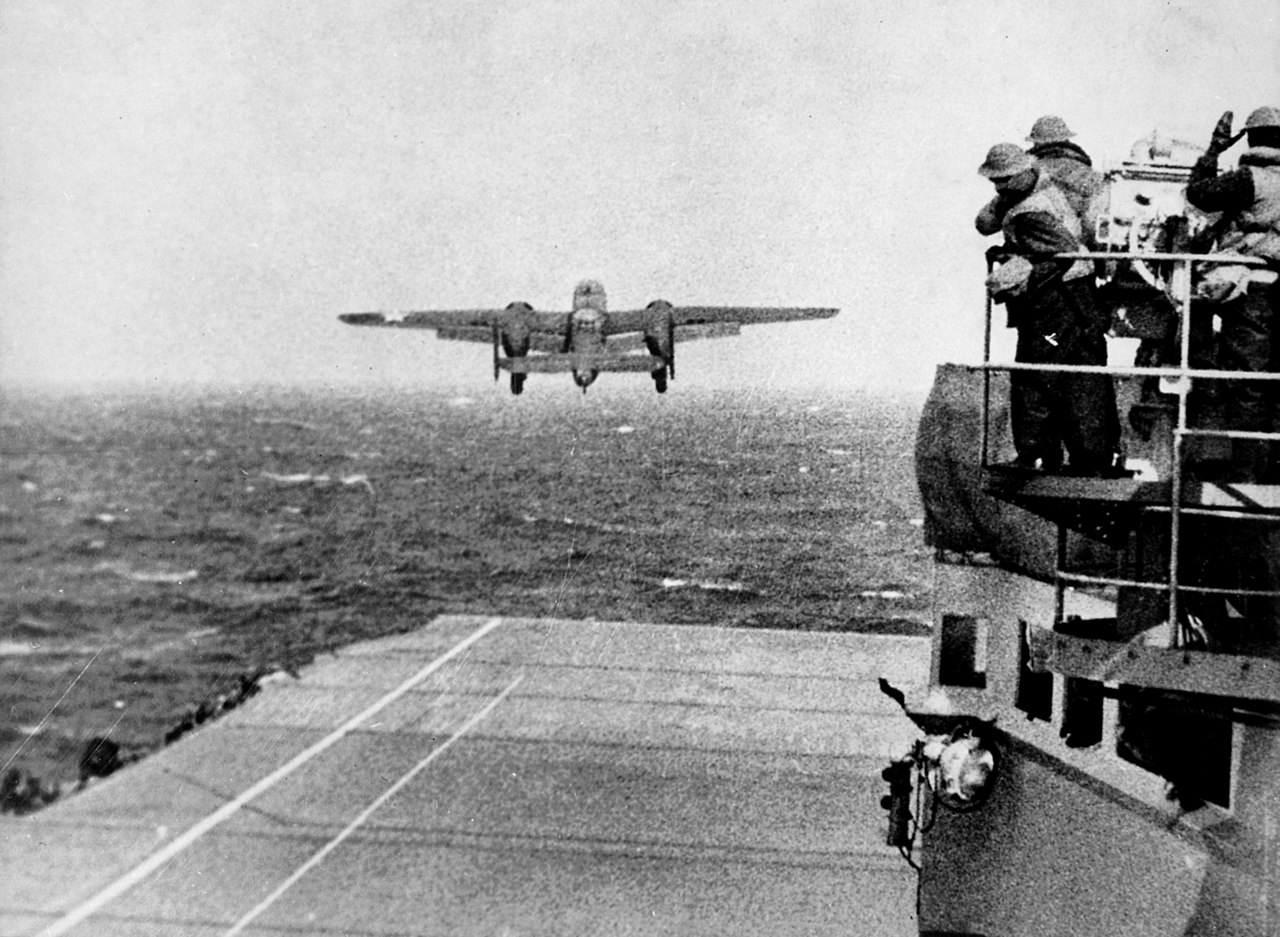 At 09:45, a Japanese patrol plane spots the bombers and alerts Tokyo. However, Japanese naval intelligence believes it is impossible for twin-engined bombers to be operating that far out to sea and takes no action. Doolittle continues leading his force west in a very loose formation stretching over two hundred miles, fighting 20-mile-per-hour headwinds. Colonel Doolitttle, in the lead, crosses the Japanese coast around noon about 80 miles northeast of Tokyo. At 12:15, he releases four incendiary clusters on the city. Facing heavy antiaircraft fire, Doolittle descends to a treetop level and turns south, heading for China. The following bombers arrive soon after from all directions but skip Tokyo and instead bomb Yokohama, Kobe, Osaka, and Nagoya, confusing the Japanese defenses. After dropping their 500-pound bombs, they, too, scoot off to the west toward China. Photo: Smoke rises from bomb strikes on the Japanese mainland on 18 April 1942 The Doolittle raiders now are in the clear, but they have one a problem: they don't have enough fuel to make it to the planned five landing strips at Chuchow. The US has kept the raid so secret, however, that the Chinese haven't been properly informed of the bombers' arrival, so they fail to send out pre-arranged homing signals. In any event, the bombers run out of fuel, and most of the crews bail wherever they happen to be - and many crews can't even tell if they are over land or water due to clouds and fog. Of the sixteen planes, only one makes a safe landing at an airfield at Vladivostok, where, much to their surprise, they are taken imprisoned as internees (they eventually escape to Iran). Photo: Two sizable Japanese naval vessels, left foreground, at Yokosuka Naval Base, near Yokohama, this photo was taken from the window of a raiding B-25 plane Doolittle himself parachutes into a rice paddy behind Japanese lines and quickly makes contact with Chinese guerillas. Only three of 72 crewmen of the Doolittle Raiders perish before reaching the ground. Eight men are taken as prisoners and, after a war crimes trial, three are executed by a Japanese firing squad. One of the other men dies in captivity. The planes averaged about 2,250 nautical miles (4170 km), the longest mission ever by B-25 Mitchell bombers. Newspaper: The Minneapolis Morning Tribune of 18 April 1942 trumpets the Doolittle Raid on Tokyo

|
|
lordroel
Administrator
Member is Online
Posts: 68,099 
Likes: 49,493
|
Post by lordroel on Apr 19, 2021 2:48:34 GMT
Day 953 of World War II, April 19th 1942Eastern Front Soviet 33rd Army, which has been trapped near Vyazma for a month, is annihilated. Their commander General Mikhail Grigoryevich Yefremov, already severely wounded in the back, shoots himself in head when surrounded by a German patrol. Battle of the AtlanticArmed U.S. freighter 'Steel Maker' is torpedoed and sunk by German submarine 'U-136' west of Bermuda. "I am sorry to have to sink you and do this to you," one German officer says apologetically after the enemy has questioned the survivors about the ship, its cargo, and destination, "but this is war." He promises to send 'Steel Maker's position to enable the Americans to be rescued. The last survivor is picked up on 18 May. Battle of the CaribbeanU-130 surfaces and uses the 88mm deck gun to shell the Bullen Baai Company petroleum storage facility, near Willemstad on the Dutch island of Curaçao in the Caribbean (no damage done). Dutch return fire with their 120 mm naval gun battery forcing U-130 to submerge. Battle of the MediterraneanOff Sfax, Tunisia, British submarine HMS Umbra sinks Italian vessel Assunta de Gregori. Off Palestine, U-81 sinks a tiny sailing boat with gunfire at 4.51 PM and rams the sailing vessel Hefz el Rahman at 10 PM. Photo: U.S. Navy Grumman F4F-4 Wildcat from Fighting Squadron 71 (VF-71) and Royal Air Force Supermarine Spitfire Mk.Vc of No. 603 Squadron RAF on the deck of the aircraft carrier USS Wasp (CV-7) Pacific War Pacific War BURMA The Allies win a pyrrhic victory. They rescue the encircled 1st Burmese Division near Yenangyaung, but lose all of their tanks and much of their artillery and motorized transport. They have very little left to defend Mandalay, Lashio and the Burma Road and northern Burma. Photo: British and Chinese troops on a British M3 Stuart tank after Chinese troops relieved 7,000 British troops who had been surrounded by the Japanese in the Battle of Yenangyaung, Burma (now Myanmar), 19 Apr 1942 PHILIPPINES The Japanese have completed their conquest of Cebu Island and encounter little organized opposition on nearby islands. HAWAII Photo: USS Nevada leaves Pearl Harbor for a trial run on April 19, 1942, after hurried repairs from the 7 December 1941 air raid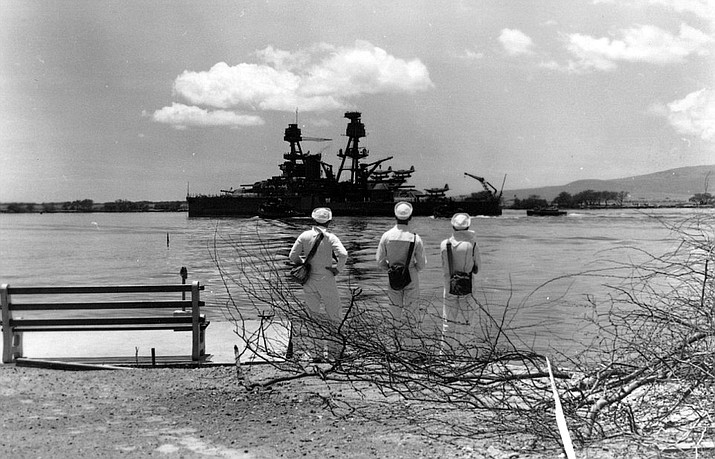
|
|
lordroel
Administrator
Member is Online
Posts: 68,099 
Likes: 49,493
|
Post by lordroel on Apr 20, 2021 2:47:45 GMT
Day 955 of World War II, April 20th 1942Eastern Front After a month of fighting since March 21, German forces under General Walther von Seydlitz-Kurzbach break out of the Demyansk pocket through the "Ramushevo corridor". Of 100,000 Germans trapped in the pocket, 3,335 have been killed and 10,000 wounded. The airlift to supply the troops since February 8 has cost 265 Luftwaffe aircraft (including 106 Junkers Ju52, 17 Heinkel He111 and 2 Junkers Ju86) and 387 airmen while Soviets have lost 408 aircraft, including 243 fighters. The successful supply mission and subsequent breakout convinces Hitler and Göring that holding large pockets can tie up large Soviet formations; they will try the same tactic at Stalingrad, later in the year. Battle of the Atlantic 1.5 miles off the Norwegian coast near Namsos, British submarine HMS Trident sinks the German freighter SS Hödur. Off the US East coast, U-654 sinks Swedish MV Agra (carrying 6666 tons of supplies, nitrate, trucks and drums of fuel to Allied troops in Egypt) and US freighter Steel Maker (carrying 7660 tons of lend-lease supplies to USSR via Iran), U-572 sinks British SS Empire Dryden (also carrying 7000 tons military stores to Egypt) and U-109 sinks British SS Harpagon (carrying 8017 tons of supplies, explosives, aircraft and tanks to British forces in Bombay, India). 75 miles North of the Turks and Caicos Island, U-154 sinks Canadian SS Vineland (in ballast). Battle of the MediterraneanThe aircraft carrier USS 'Wasp' (CV-7), escorted by the battle cruiser HMS 'Renown' and screened by two US and four RN destroyers, launched 47 RAF Spitfires which landed on Malta; however, 30 are immediately destroyed. Within four days, all but six of the Spitfires are destroyed by Luftwaffe bombings. Photo: USS Wasp (CV-7). British Royal Air Force Spitfire V fighter takes off from the carrier, after a 200-foot run, May 1942. Probably taken during Wasp's second Malta aircraft ferry mission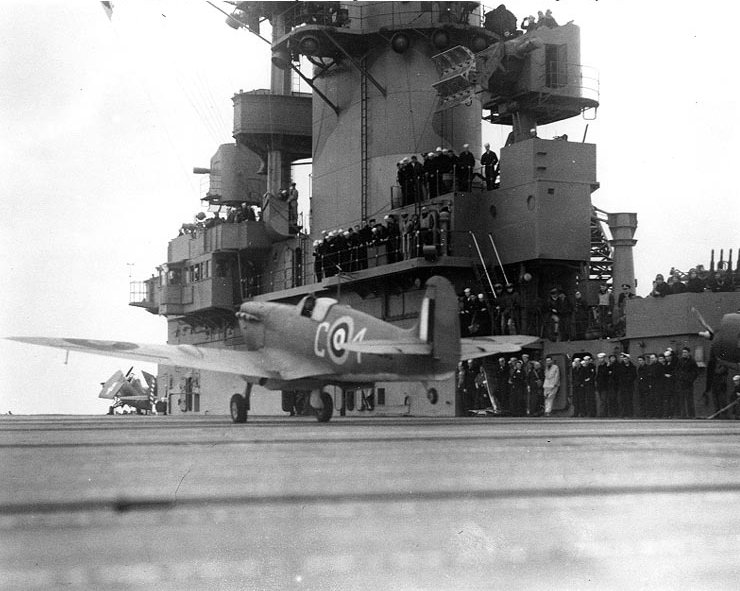 Pacific War Pacific War AUSTRALIA USAAF Major General George H Brett assumes command of the Allied Air Forces, which has units based in northern and eastern Australia, with advanced facilities in the Port Moresby, New Guinea, area. 39th Pursuit Squadron, 35th Pursuit Group (nterceptor), transfers from Williamstown to Woodstock, Australia with P-39's; first mission is 2 Jun. Ground echelon of 70th Bombardment Squadron, 38th BG (Medium), transfers from Ballarat to Amberley Field, Australia; air echelon is still in the US with B-26's. PHILIPPINE ISLANDS Japanese heavy artillery, including 9.5-inch mortars, on Bataan smash US positions on Corregidor, 2 miles away. The Japanese conquest of the central Philippines is nearly complete as Cebu and Panay are conquered. Small U. S. and Filipino garrisons have fled into the hills of Leyte, Samar, Negros and Bohol. BURMA Japanese make good progress as they push North to threaten the Burma Road to China. Burmese 1st Infantry Division and Chinese 38th Division withdraw North from Yenangyaung. Japanese 18th Division attack Chinese positions at Kyidaunggan on the road to Mandalay while Japanese 56th Division captures Loikaw on the road to Lashio.
|
|
lordroel
Administrator
Member is Online
Posts: 68,099 
Likes: 49,493
|
Post by lordroel on Apr 21, 2021 2:46:11 GMT
Day 956 of World War II, April 21st 1942Eastern Front The three-month battle to relieve 100,000 Germans trapped in the Demyansk pocket northwest of Moscow ends with the surrounded Germans breaking through the Russian lines. The German troops had been supplied by airlifts only for ten weeks. The Germans request the assistance of the Italian Navy to deal with the ramshackle Soviet flotilla on Lake Ladoga (estimated at 6 gunboats, 2 large and 5 small torpedo boats, 32 armed minesweepers, 9 armed transport ships,17 armed tugboats and 1 submarine, plus another 25 other boats). The Italian Navy promptly agreed and sent the four torpedo boats (MAS 526 to 529) of 12th MAS Flotilla, commanded by Capitano di Corvetta (Lt-Comm) Bianchini, with four officers, 19 NCO's, and 63 other ranks. Battle of the Atlantic 30 miles off Cape Hatteras, North Carolina, U-84 torpedoes Panamanian SS Chenango which sinks within 1 minute (30 killed). 2 men escape on a raft and are picked up by a US Coast Guard PBY Catalina flying 12 days later (1 man dies 2 days later, 1 Irish fireman survives). At 2.36 AM 500 miles East of North Carolina, U-201 sinks Norwegian SS Bris (5 dead, 21 survivors in 2 lifeboats rescued by American motor tanker Chester D. Swain on May 3 and by patrol vessel YT-132 on May 4). At 4.48 AM 175 miles East of Nantucket, U-752 sinks American SS West Imboden (all 35 hands rescued next day by US destroyer USS Bristol). At 6.54 PM 475 miles East of Virginia, U-576 sinks American SS Pipestone County (all 35 hands escape in 4 lifeboats and rescued after 3-17 days). Battle of the Mediterranean12 miles North of Crete, British submarine HMS Torbay sinks German vessel Delpa II in a gun duel. German coastal artillery shells HMS Torbay which dives and escapes, despite the attention of 2 German torpedo boats. British anti-submarine trawler HMT Jade is sunk by bombing at Grand Harbour, Malta. Malta is nearly defenseless and Italian dictator Benito Mussolini urges an assault led by German parachute units. Hitler is hesitant, recalling the heavy losses his paratroopers suffered in 1941 when they drove the British from Crete. Photo: "The Duke of Gloucester inspects the Royal Marine Guard of Honour onboard HMS Cleopatra." Alexandria, Egypt, 21 April 1942 United States Photo: Assembly line for the M4A1(75) at Pacific Car & Foundry of Renton, Washington, 21 April 1942 United States Photo: Assembly line for the M4A1(75) at Pacific Car & Foundry of Renton, Washington, 21 April 1942 Pacific War Pacific War BURMA Japanese continue moving North to threaten the Burma Road (the important Allied supply line from India to China). Japanese 18th Division overwhelms Chinese troops to capture Kyidaunggan, 140 miles South of Mandalay.
|
|
lordroel
Administrator
Member is Online
Posts: 68,099 
Likes: 49,493
|
Post by lordroel on Apr 22, 2021 2:50:13 GMT
Day 957 of World War II, April 22nd 1942Operation AbercrombieOvernight, Allied raiding party (100 British commandos of B and C troops No. 4 Commando and 50 Canadian infantry of 2nd Canadian Infantry Brigade, commanded by Major Lord Lovat) crosses the English Channel in motor torpedo boats and land near Boulogne, France, from the newly-designed new Landing Craft Support. They reconnoitre the beaches but fail to capture any German prisoners for interrogation or destroy a searchlight battery (1 British commando shot through the ankle by a German sentry). Photo: Men of No. 4 Commando after returning from a raid on the French coast near Boulogne, 22 April 1942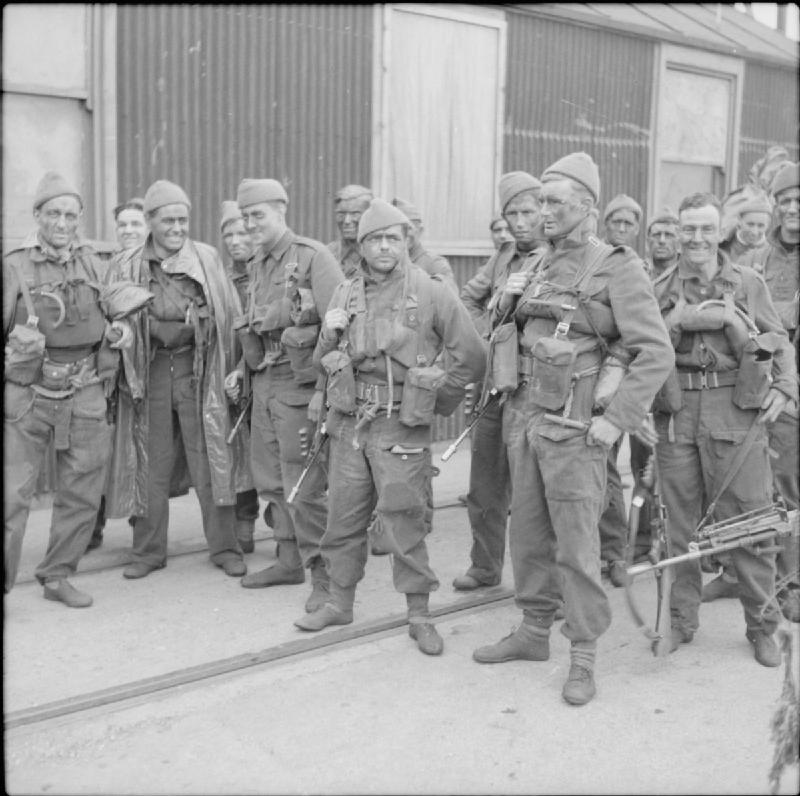 Battle of the Atlantic Battle of the Atlantic After missing German ships on March 16, April 7 and April 14, Soviet submarine M-173 sinks German SS Blankenese in the Barents Sea 3 miles off the Northeast tip of Norway. 375 miles southeast of Cape Hatteras, North Carolina, U-201 torpedoes US passenger/cargo ship SS San Jacinto carrying 79 crew and 104 passengers (5 crew, 9 passengers killed). 74 crew and 95 passengers (including 32 women and children) escape on 6 lifeboats and several rafts, before U-201 sinks SS San Jacinto with 75 rounds from the deck gun, and are picked up after dawn by US destroyer USS Rowan. U-201 then sinks British SS Derryheen on her maiden voyage at 9.05 AM (all 51 hands picked up by British MV Lobos and landed at Havana, Cuba). Battle of the MediterraneanGerman and Italian aircraft continue heavy bombing of Malta. 20 miles off the coast of Palestine, U-81 sinks 4 tiny sailing boats with shellfire from the deck gun including Egyptian El Saadiah at 4.45 AM and Aziza at 12.35 PM. Air War over Europe Overnight, RAF Bomber Command sends 64 Wellingtons and 5 Stirlings to Cologne, Germany, on an experimental raid to test the new Gee radio transmitter system for blind navigation at night. The raid is a partial success, with 12 to 15 aircraft dropping bombs accurately (44 high-explosive & 1200 incendiary bombs land in the city, 4 civilians killed, 8 wounded) but others miss by up to 10 miles. 2 Wellingtons are lost. Pacific War BURMA Indian 17th Infantry Division has held Taungdwingyi since the Japanese attack on the Irrawaddy River line on April 11. With Japanese troops moving North all around them, Indian 17th Division withdraws 75 miles North to Mahlaing to protect Mandalay. NEW ZEALAND A joint US-New Zealand Naval Command is ordered established under Vice Admiral Robert L Ghormley, USN. It is to operate separately but in close liaison with General Douglas MacArthur and Vice Admiral Herbert F. Leary in Australia. JAPANESE OCCUPIED SINGAPORE Photo: Japanese light cruiser Naka at the Seletar Naval Base, Singapore, 22 April 1942. It is showing battle damage amidships and listing after being torpedoed by US Navy submarine USS Seawolf off Christmas Island on 1 April 1942
|
|
lordroel
Administrator
Member is Online
Posts: 68,099 
Likes: 49,493
|
Post by lordroel on Apr 23, 2021 7:29:21 GMT
Day 958 of World War II, April 23rd 1942
Air War over Europe
The RAF made the first of a series of four raids on the Baltic port town of Rostock. These raids had many of the characteristics of the successful raid on nearby Lubeck one month earlier -a concentrated, incendiary area bombing attack of a town with only light defenses. An added feature on each night, however, was the inclusion of a small force of bombers, from RAF 5 Group on the first three nights, to attempt a precision attack on the Heinkel aircraft factory on the southern outskirts of Rostock. On this first night, 143 aircraft were sent to bomb the town and 18 to the Heinkel factory. Bombing conditions were good but the results of the raid were disappointing. The Heinkel factory was not hit and most of the main bombing intended for the Altstadt fell between 2 and 6 miles away. Four bombers - two Wellingtons, 1 Manchester and 1 Whitley - were lost with 1 Wellington claimed by Hptm. Schutze of 4./NJG 2.
The first of the Hitler ordered "Baedecker Raids", the renewed bombing of England was carried out against Exeter by a force of 45 Do 217s of KG 2 and Ju 88s of KG 106 guided by a small force of He 111s of I./KG 100. They caused little damage and the raid was mostly a failure.
Battle of the Atlantic
Overnight, in the South Atlantic 1600 miles East of Rio de Janeiro, Brazil, German armed merchant cruiser Michel spots a tanker and launches torpedo boat LS-4 (named Esau). US tanker Connecticut, carrying a cargo of 100-octane gasoline, explodes when hit without warning by Esau’s 2 torpedoes, spilling burning gasoline on the surface which envelops 2 lifeboats (36 killed, 18 survivors taken prisoner by Michel but 2 will die as Japanese POW's).
35 miles Northeast of Sidi Barrani, Egypt, U-565 sinks British SS Kirkland (1 killed, 16 crew and 6 gunners picked up by British anti-submarine whaler HMS Falk).
500 miles southeast of Bermuda, U-125 sinks American SS Lammot Du Pont (6 killed). 15 survivors on 2 rafts are picked up after 2 days by Swedish MV Astri. 33 men in a lifeboat are found by US destroyer USS Tarbell after 23 days, but 8 have already already died and 3 others die later in hospital at San Juan, Puerto Rico. To prolong U-boat cruises, Kriegsmarine has commissioned Type XIV supply U-boats (Milchkühe "milk cows”) with no torpedo tubes or deck guns but capacity to hold fuel and torpedoes to transfer to standard U-boats. In addition, Milchkühe have bakeries to make fresh bread and large refrigerators of fresh food. U-459 becomes the first active "milk cow”, beginning refueling operations on the US East coast.
1 mile off the North coast of Norway, Soviet submarine ShCh-401 attacks a German supply convoy from Narvik to Kirkenes, sinking Norwegian merchant Stensaas (all hands rescued by convoy escort German auxiliary submarine chaser UJ 1101). Later, ShCh-401 attacks another German submarine chaser UJ 1110, which counterattacks with depth charges. ShCh-401 is not damaged and radios her position in the evening but is then lost in German minefield "Karin", laid a few days earlier by German minelayer Ulm.
Pacific War
CHINA
The Chinese 6th Army retreats from Taunggyi toward Yunnan Province.
BURMA
The IJA 56th Division moves from Taunggyi toward Lashio, Burma.
|
|
lordroel
Administrator
Member is Online
Posts: 68,099 
Likes: 49,493
|
Post by lordroel on Apr 24, 2021 6:23:10 GMT
Day 959 of World War II, April 24th 1942Eastern Front Siege of Leningrad Day 229 - The Spring thaw finally makes the ice road across Lake Ladoga unusable. The Road of Life has operated for 152 days carrying over 100,000 tons of food and ammunition into the city and bringing out 440,000 civilians. Air War over Europe 12 RAF Douglas DB-7 Boston bombers with fighter escort fly across the English Channel on a daylight raid on the docks at Flushing, The Netherlands. No aircraft are lost. Overnight, RAF returns to Rostock. 91 aircraft target the town, causing much damage to the old wooden buildings with incendiary canisters. 34 bombers drop bombs in the vicinity of the Heinkel aircraft works but fail to hit any of the factory buildings. 1 Hampden is lost. For the second night, Luftwaffe aircraft bomb Exeter in Southwest England. This is the beginning of the Baedeker Blitz (bombing of British cultural and historic targets in retaliation for the bombing of Lübeck, Germany, on March 28). Battle of the Atlantic 280 miles Southeast of New York, U-136 sinks British MV Empire Drum carrying 6000 tons of military stores, including 1270 tons of explosives, from New York to Egypt. All 41 hands abandon ship in 4 lifeboats. Swedish MV Venezia rescues 14 men in one lifeboat on April 26. US destroyer USS Roper picks up 14 survivors on April 29 and 13 men on 1 May (only 15 miles from the US coast). United StatesA new specification for color of naval aircraft went into effect. The color of service aircraft remained non-specular light gray with non-specular blue-gray on surfaces visible from above. Advanced trainers were to be finished in glossy aircraft gray with glossy orange yellow on wing and aileron surfaces visible from above while primary trainers were to be finished glossy orange-yellow with gray landing gear. Pacific War AUSTRALIA 8th Photographic Squadron, 5th Air Force (attached to Allied Air Forces), transfers from Melbourne to Brisbane Australia with F-4's; first mission was 16 Apr. Lost on a ferry flight are: B-25C "Tojo's Nitemare" 41-129??, B-25C "Chattanooga Choo Choo" 41-129??, B-25C "Salvo Sadie" 41-129??. NEW GUINEA In the morning, a substantial Japanese air raid destroyed two B-26s at 7-Mile Drome at Port Moresby. Also, PBY Catalina moored in the harbor, and three P-40E Kittyhawks from 75 Squadron were shot down. PHILIPPINE ISLANDS Photo: Manila newspaper announcing the fall of Bataan 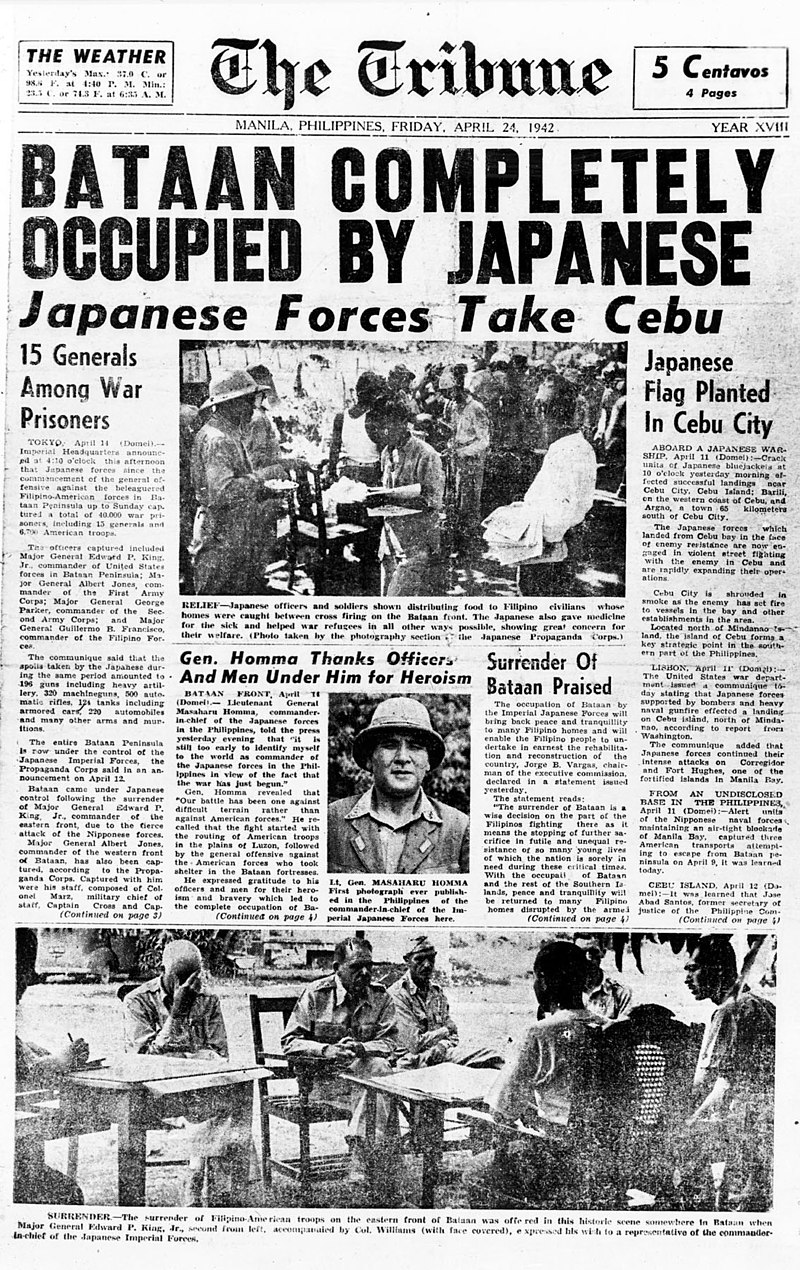
|
|
lordroel
Administrator
Member is Online
Posts: 68,099 
Likes: 49,493
|
Post by lordroel on Apr 25, 2021 6:33:36 GMT
Day 960 of World War II, April 25th 1942YouTube (Allied Intelligence cracks Japanese codes!)Air War over Europe The RAF returned to Rostock during the night with 128 aircraft of six types, 110 to the town and 18 to the Heinkel factory. No aircraft were lost although crews reported that Rostock's flak defenses had been strengthened. Heavy bombing of the town and many fires were achieved. Some aircraft also hit the Heinkel factory for the first time, the crews achieving this were flying Manchesters of RAF No. 156 Sqdn, which was commanded by Wing Commander Guy Gibson. Although Oblt. Rudolf Schoenert of 4./NJG 2 was credited with a Wellington during this raid, it may have been a Stirling from another, smaller British raid. Six Stirlings carried out a long-range attack on the Skoda armaments factory at Pilsen in Czechoslovakia. Cloud covered the target on arrival but at least five Stirlings bombed. One Stirling was lost from the raid. Battle of the Caribbean110 miles Northwest of Bermuda, U-108 sinks British SS Modesta (17 crew and 1 gunner lost, 19 crew and 4 gunners picked up by Belgian merchant SS Belgian Airman and landed at Bermuda). United KingdomPhoto: A 16-year-old Princess Elizabeth registers for war service under the Ministry of Labour's Youth Registration Scheme, 25th April 1942. She is wearing her Girl Guide uniform Pacific War Pacific WarBURMA British Generals Alexander and Slim confer with US General Stilwell (assigned to the Chinese Army) at Kyaukse, 20 miles South of Mandalay, to discuss whether British forces will withdraw East into China or West into India. A withdrawal into China would leave the path to India, “jewel in the crown” of the British Empire, open to the Japanese. Chinese have a vested interest in protecting the Burma Road; Chinese 200th Infantry Division, currently holding the road to Mandalay at Meiktila, sends troops East to Taunggyi to block the Japanese 56th Division path to Lashio. LUZON, PHILIPPINES Japanese shelling of US fortifications on the island of Corregidor continues but for the first time firing occurs after dark. US command center is located in the bomb-proof Malinta Tunnel. At 10 PM, 2 shells from the Japanese 240mm siege howitzer lands near the Western entrance to the tunnel among US troops getting fresh air or smoking (15 killed, 35 wounded). 12 miles off the West coast of Luzon near the mouth of the Lingayen Gulf, US submarine USS Spearfish sinks Japanese freighter Toba Maru. Map: Map of Corregidor island in 1941 DARWIN, AUSTRALIA 27 Japanese bombers and 15 fighters attacked the RAAF airfield on the outskirts of Darwin. USAAF 49th Pursuit Group, flying P 40 Warhawk fighters, claim 10 Japanese bombers and 2 fighters shot down and 1 bomber damaged (no Warhawks lost). CHINA In response to the Doolittle Raid on April 18 and the crash-landing of B-25 Mitchell bombers in China, Japanese troops (22nd Infantry Division) begin scouring the Chinese provinces of Zhejiang and Jiangxi for the US airmen. Any towns or villages suspected of harboring the Americans will be burned to the ground and many civilians are executed in retaliation for China’s support of the raid.
|
|

/arc-anglerfish-arc2-prod-mco.s3.amazonaws.com/public/RRHJRSD6BVEFVM6LPI33IMWS6Q.jpg)

/arc-anglerfish-arc2-prod-mco.s3.amazonaws.com/public/RRHJRSD6BVEFVM6LPI33IMWS6Q.jpg)

































